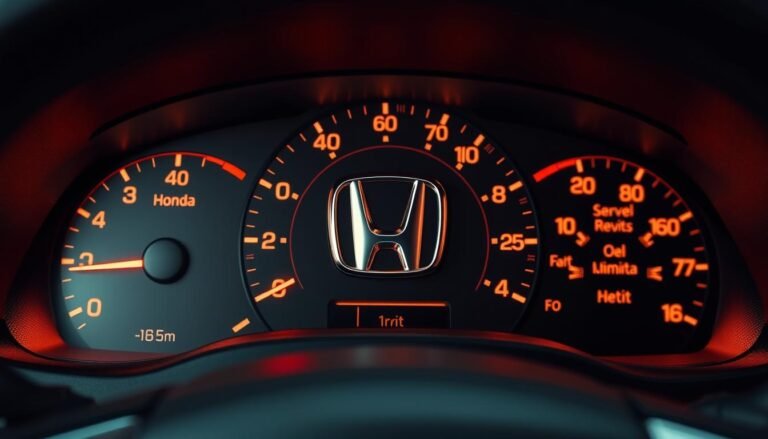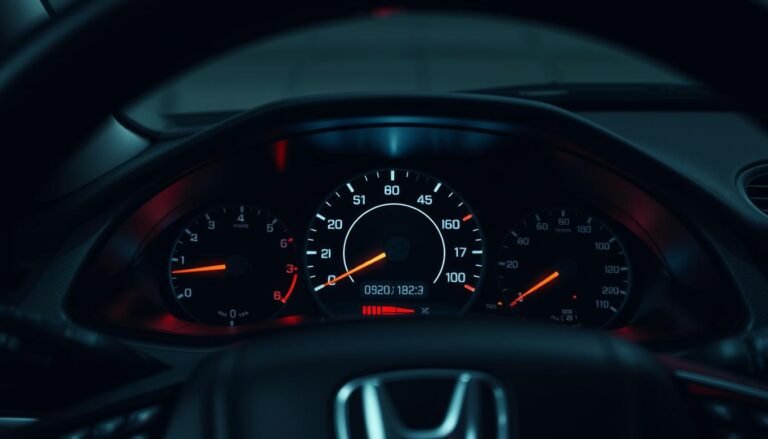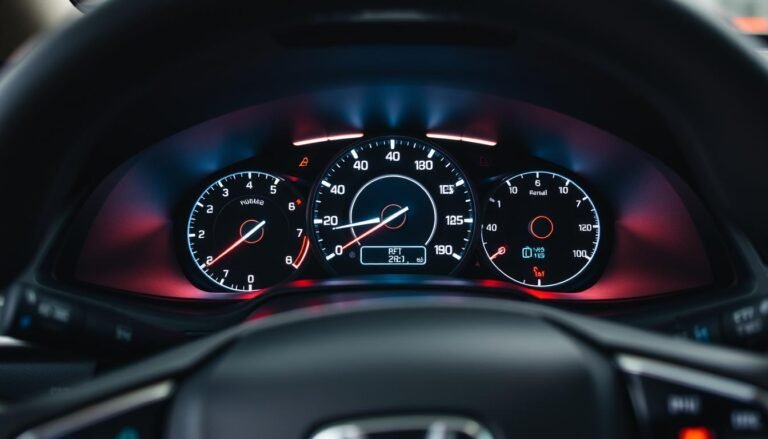Why Honda Pilot Won’t Start? Inspiring Essential 7 Tips
Having trouble starting your Honda Pilot? You’re not alone. Many Honda Pilot owners encounter starting problems. There are several reasons why this happens.
Knowing how to figure out the issue can save you both time and money. Plus, you’ll get back to driving your Honda Pilot faster.
We’re going to cover the top reasons your Honda Pilot won’t start. This includes checking the battery, fuel system, and ignition.
You’ll learn how to spot a bad battery, check your fuel system, and test the starter motor. With these tips, you’ll be able to find and maybe even fix the problem yourself.
With these useful tips, you’ll be better prepared to fix starting problems. We’ll go into more detail on how to diagnose and solve these issues. This will help you make sure your Honda Pilot runs smoothly.
What is The Common Causes of Honda Pilot Starting Issues?
When your Honda Pilot won’t start, it’s crucial to pin down the reasons. There are several common issues that can prevent the engine from turning on.
Identifying these problems early can save you both time and frustration. Battery failure, fuel system troubles, starter motor issues, and ignition system failures are often to blame.
If the battery of your vehicle is weak, it might lack the power needed to start the engine. Auto-start systems in some models can drain the battery quicker.
Issues in the fuel system, like a blocked fuel filter or a bad fuel pump, stop fuel from flowing right. Checking the starter motor might reveal more possible problems.
A bad starter can have trouble engaging the engine, making it hard to start the car.
Lastly, worn-out spark plugs or broken ignition coils in the ignition system may cause start-up issues. They prevent the needed spark to ignite the fuel-air mix.
Check The Battery Health
When you’re fixing a honda pilot that won’t start, it’s crucial to check the battery first. Many times, the problem is with the battery. So, it should be the first thing you look at.
Signs of A Failing Battery
Knowing when your battery is failing can prevent sudden car trouble. Look out for:
- Dimming headlights when the ignition is turned on
- A sluggish engine crank when attempting to start
- No response at all upon turning the key
If these problems seem familiar, it’s time to check your battery. Taking care of honda pilot battery issues early can stop other problems from happening.
Importance of Cold Cranking Amps
Cold Cranking Amps (CCA) tell you how well a battery can start an engine when it’s cold.
A battery with a low CCA won’t do well in the cold, which could cause your car not to start.
If your battery is older than three years or you drive a lot with frequent stops, think about getting a new one. This will ensure your car works well.
Inspecting The Fuel System
When you look into why your Honda Pilot won’t start, the fuel system is key. It’s vital to have enough fuel for the engine to work.
Make sure the fuel tank isn’t empty since low fuel can stop the engine from starting. Also, bad fuel can really lower performance.
By checking both fuel amount and quality, you can spot issues with your Honda Pilot’s fuel system.
Checking Fuel Levels and Quality
First, see if the fuel gauge shows enough fuel. If it’s empty or seems off, check the fuel level yourself.
Also, look at the fuel’s quality. If it’s dark, looks cloudy, or smells bad, get new fuel right away. Using clean fuel helps the engine run better and more efficiently.
Fuel Pump and Filter Considerations
A working fuel pump is crucial for getting fuel to the engine properly. When you turn the key, listen for the fuel pump. If you don’t hear anything, the pump might be broken.
Also, check the fuel filter. A dirty filter can block fuel flow and make starting hard. If you keep these parts well-maintained, you’ll likely avoid problems with your Honda Pilot’s fuel system.
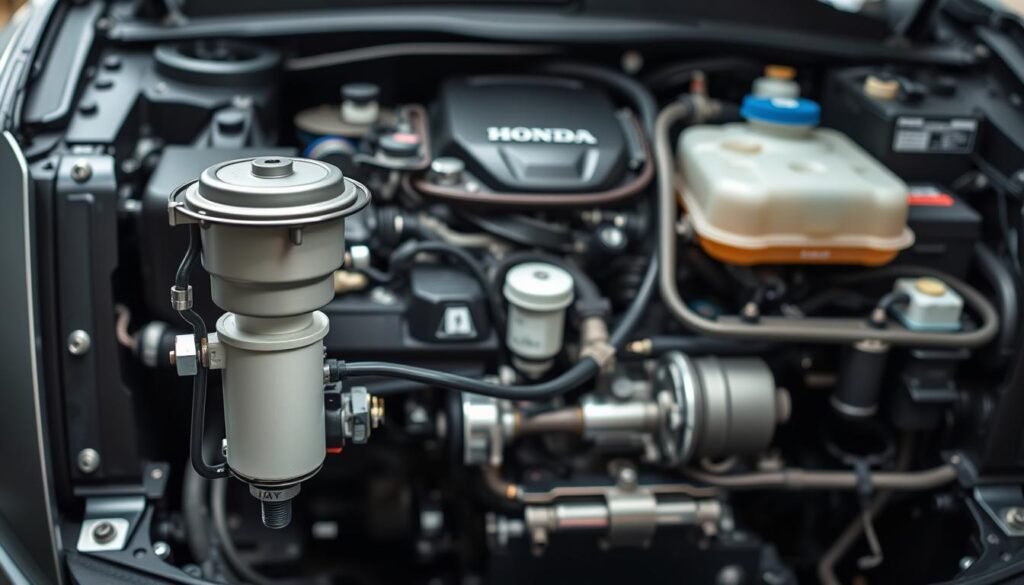
Testing The Starter Motor
The starter motor gets your Honda Pilot’s engine going. When you face starting issues, knowing the signs and figuring out starter troubles can be key. This helps fix the problem well.
Symptoms of A Bad Starter
Several signs show up when the starter motor is failing:
- You hear a clicking sound when turning the ignition key.
- The engine does not turn over, despite the battery appearing charged.
- Intermittent starting issues occur, where the vehicle randomly fails to start.
How To Diagnose Starter Problems
Here are steps to find out what’s wrong with your Honda Pilot’s starter:
- Check the battery voltage. Ensure it is adequately charged before proceeding.
- Inspect the connections at the starter motor for corrosion or loose wires.
- Test for power at the starter. If power is present but the starter does not engage, consider replacing it.
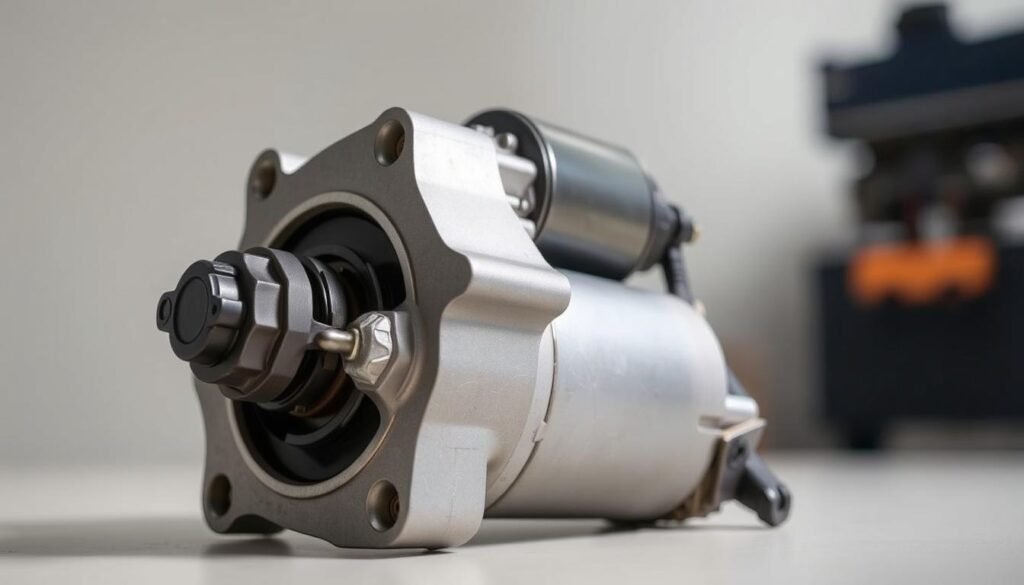
Evaluating The Ignition System
Your Honda Pilot’s ignition system is crucial for starting and running smoothly. Problems here can cause ignition failure.
It’s important to check the spark plugs and ignition coils first. They are essential for creating the spark that ignites the engine’s air-fuel mix.
Checking Spark Plugs and Ignition Coils
First, examine the spark plugs. Look for signs of wear like cracks or carbon buildup. These flaws can hurt performance.
Any damaged spark plugs should be replaced to avoid starting trouble. Then, inspect the ignition coils.
They send electrical current to the spark plugs. If an ignition coil is not working right, your engine might perform poorly, misfire, or not start at all.
Common Ignition Failures
Finding common ignition issues is critical for solving starting problems. Symptoms may include rough idling or having a hard time starting the car.
Often, these problems come from bad spark plugs or ignition coils. Fixing these issues quickly can make your Honda Pilot start more reliably and run better.
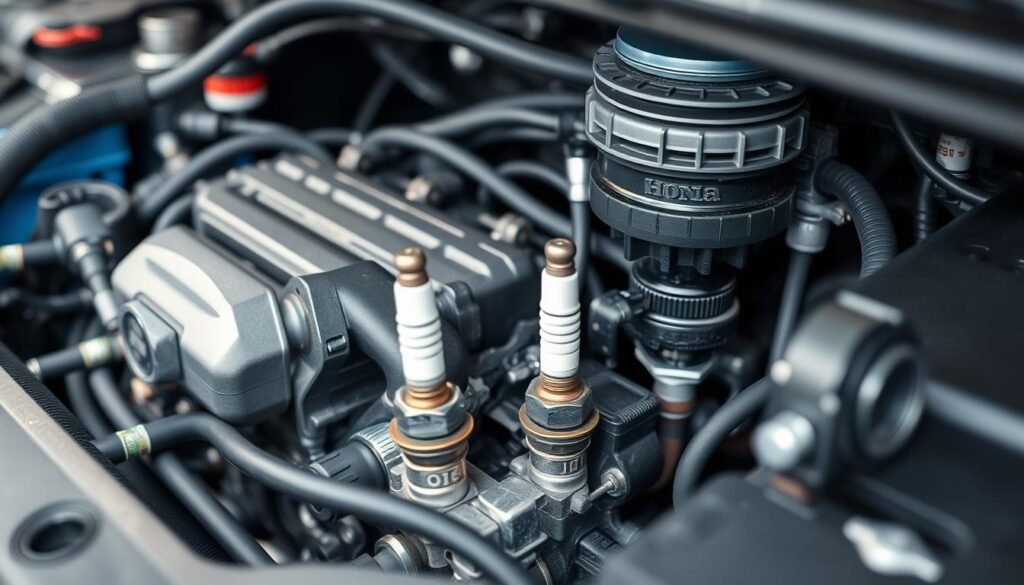
Electrical System Check-ups
Checking your car’s electrical system is key, especially with honda pilot electrical troubles. If your car won’t start, it could be because of an electrical issue.
It’s crucial to check many parts, like the battery terminals, cables, and if there are any blown fuses that might be causing problems.
Examining Battery Terminals and Cables
First, look at the battery terminals to see if they are corroded or not connected well. Corrosion can block the electricity your car needs to start.
Make sure the connections are tight and clean. Also, check the cables for any signs of damage or wear, as this can cut off the power needed to solve starting issues with your Honda Pilot.
Looking For Fuses and Wiring Issues
Next, inspect the fuses that are important for starting and ignition. A blown fuse might stop key electrical systems from working.
Check your owner’s manual to find out where these fuses are and what kind they are. If a fuse isn’t working, replace it with the right type.
Also, look for any obvious problems with the wires near the battery and fuse box, as these could be signs of bigger electrical issues.
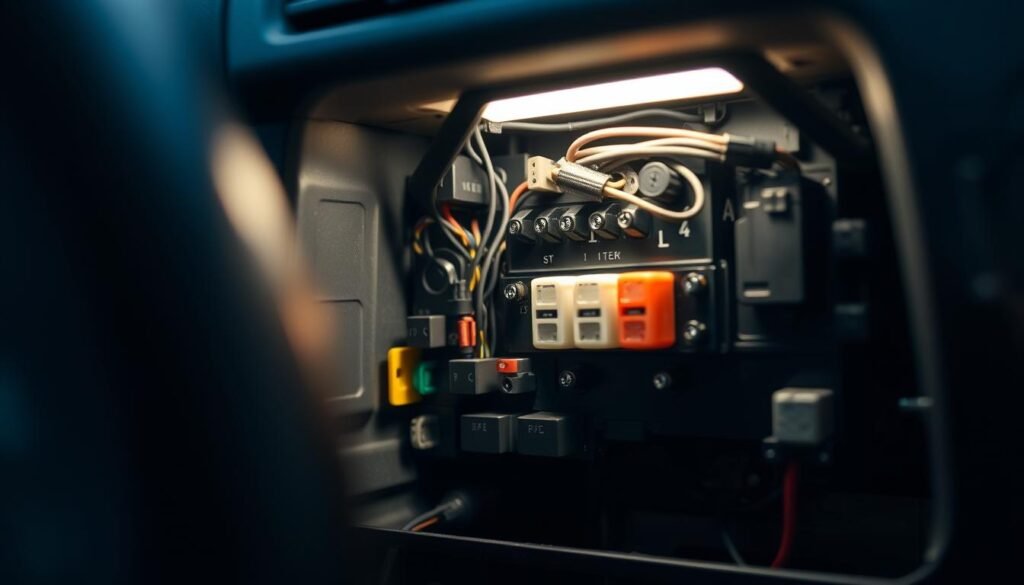
| Component | Common Issues | Signs to Look For |
|---|---|---|
| Battery Terminals | Corrosion, Loose Connections | Difficulties starting, dim lights |
| Cables | Wear, Fraying | Intermittent electrical failures |
| Fuses | Blown Fuses | Non-functioning electrical components |
Troubleshooting Tips: Why Honda Pilot Won’t Start
Having trouble starting your Honda Pilot? A structured guide can really help. Following a step-by-step process will lead you to find the root cause.
Start by checking the battery, fuel system, and starter motor. Then, using an OBD-II scanner gives deeper insights into engine issues.
Step-by-Step Troubleshooting Process
- Check Battery Health:
- Inspect battery connections for corrosion.
- Test the battery voltage with a multimeter.
- Ensure the battery is sufficiently charged.
- Inspect the Fuel System:
- Verify the fuel level is adequate.
- Check for fuel contamination.
- Assess the fuel pump function and filter condition.
- Evaluate the Starter Motor:
- Listen for clicking sounds when attempting to start.
- Inspect wiring and connections leading to the starter.
- Test the starter motor directly, if necessary.
Utilizing an OBD-II Scanner For Error Codes
Using an OBD-II scanner is key in troubleshooting a Honda Pilot’s start issues. This device checks the engine and gives you error codes.
These codes help identify specific problems, like sensor failures or issues with fuel. After scanning, look up the codes to quickly address and fix them. This helps prevent ongoing start issues.
Dealing with Anti-Theft Systems
Sometimes, the anti-theft systems in the Honda Pilot can cause issues with starting the car. You might find that your car refuses to start or the alarm goes off for no reason.
These problems happen when the system thinks there’s a security breach by mistake. To fix these, it helps to know the usual problems and how to reset the system.
Common Anti-Theft Related Starting Issues
Many drivers face problems with the Honda Pilot’s security system, leading to trouble starting the car. The main issues are:
- The vehicle won’t start, and the dashboard lights flash, showing there’s a problem.
- The alarm might go off by itself, making it hard to start the car.
- Sometimes, using the key manually doesn’t get around the anti-theft system.
How To Reset Anti-Theft Features
Resetting the anti-theft system is usually pretty simple. Always check your owner’s manual for instructions that fit your specific model.
In general, you can follow these steps:
- Use the key to manually unlock the car and reset the system.
- Keep the car unlocked for a time recommended in the owner’s manual.
- Try to start the car after doing the reset steps.
Additional Considerations For Fixing Honda Pilot Starting Issue
Solving starting problems in your Honda Pilot usually needs more than just quick fixes.
Focused upkeep is key to preventing issues later. Checking your car often saves time and money, ensuring smooth operation.
Importance of Regular Maintenance
Regular maintenance for your Honda Pilot is vital. It includes:
- Battery health evaluations
- Fuel system inspections
- Ignition component replacements
These actions keep your car performing well and reliable. Paying attention to these areas lowers the chance of starting troubles.
When To Consult A Mechanic
If ongoing starting problems occur after you’ve done all the right maintenance, it’s time to consider professional help. You should see a mechanic if:
- The vehicle doesn’t start even after you’ve tried basic fixes
- There are strange sounds when trying to start
- Dashboard warning lights turn on
A skilled mechanic can do thorough checks to find and fix any complex issues.
Conclusion
Knowing why your Honda Pilot won’t start is key for fixing it right. We’ve covered common problems like battery issues, fuel system hiccups, and starter motor troubles.
Plus, we’ve given you handy tips for Honda Pilot starting problems. By using this guide, you can pinpoint the main issue and fix your Honda Pilot’s starting problems.
Don’t forget, regular checks on your car prevent starting problems and keep it running longer. It’s important to inspect key parts often and fix any damage quickly.
And if starting issues keep happening, getting help from a pro is your best bet to sort it out fast. Arming yourself with knowledge and acting early helps a lot with car issues.
With the advice in this guide, you can face any problem head-on and keep your Honda Pilot in great shape.
FAQs
Q: What should I do if my Honda Pilot won’t start?
A: Start by checking the battery for any failure signs. Look at fuel levels and quality. Test the starter motor too. Taking these steps will help find the problem.
Q: How can I tell if my Honda Pilot has a battery issue?
A: Notice if lights are dim, if the engine crank is slow, or if there’s no response when starting. If it’s been over three years since you last changed the battery, you might need to test or replace it.
Q: What are some signs of a malfunctioning starter motor?
A: Common signs include clicking sounds when turning the key. Or sometimes, there’s silence even though the battery looks fine.
Q: How do I check the fuel system in my Honda Pilot?
A: First, check the fuel levels and quality. Make sure the fuel pump and filter work right. A bad fuel pump can stop the engine from starting.
Q: What should I inspect in the ignition system?
A: Look at the spark plugs for wear and carbon buildup. Check if ignition coils work correctly. These parts are essential for the engine to start.
Q: How can I troubleshoot electrical system connections?
A: Look for corrosion on battery terminals and ensure connections are secure. Also, check for frayed cables. Look at fuses related to starting and ignition systems.
Q: What is the role of an OBD-II scanner in diagnosing starting issues?
A: An OBD-II scanner can read error codes. These codes may point out specific problems with your Honda Pilot. It makes troubleshooting easier.
Q: How can anti-theft systems affect starting?
A: If the anti-theft system activates by mistake, it can block the vehicle from starting. Check the owner’s manual for reset steps, which might include unlocking the car manually.
Q: When should I consult a professional mechanic?
A: If you’ve tried to troubleshoot but your Honda Pilot still won’t start, see a professional. They can perform more in-depth diagnostics and fix any hard-to-find problems.




